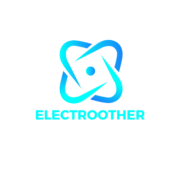The single biggest reason most cold messaging on linkedin campaigns fail is that they make a huge ask before providing any value. They immediately request “15 minutes of your time”, a demand that not only gets ignored but actively damages your brand’s reputation with every message. For B2B brands it’s an expensive strategy, burning through high-value leads and making your outreach look like spam. The most practical and effective shift you can make is to redefine your goal: stop trying to book a meeting and start trying to have a conversation. This guide provides the playbook for moving from a selfish ‘taker’ mindset to a generous ‘giver’ approach that actually gets replies.
In 2025, your ideal B2B client is more informed, more skeptical, and more time-starved than at any point in history. Their inbox is a fortress, and their attention is the treasure locked inside. A lazy, templated cold message isn’t just a failed attempt to pick the lock; it’s a loud, obnoxious alarm that gets you permanently blacklisted. The brands that are winning are the ones who understand this. They’ve stopped pitching and started conversations. They’ve stopped asking for value and started providing it.
The Anatomy of a Failed Campaign: A Masterclass in What Not to Do
Before we can fix the problem, we need to dissect the corpse of a typical failed cold message. It usually has four fatal flaws.
- The Premature Ask: This is the cardinal sin. The message immediately asks for something—usually “15 minutes of your time.” Let’s be clear: asking a busy executive for their time is a significant withdrawal from a relational bank account where you have a zero balance. You have offered nothing, built zero rapport, and demonstrated zero understanding of their world, yet you feel entitled to their most valuable asset. It’s the digital equivalent of proposing marriage on a first date—presumptuous, off-putting, and destined for rejection.
- The Impersonal Template: The message starts with a robotic “Hi [FirstName],” and then launches into a canned pitch. In an age of sophisticated automation, savvy professionals can spot a lazy mail merge from a mile away. It signals that you see them not as a person, but as just another row in your spreadsheet. It’s a message that says, “I haven’t done a shred of research on you, but I’d like you to do the work of figuring out why my product is relevant to you.”
- The Feature Dump: The message is a laundry list of what your product or service does. “Our AI-powered platform offers synergistic solutions with a robust API and a scalable architecture…” Nobody cares. Your prospects don’t care about your features; they care about their problems. They are drowning in their own company’s challenges—revenue targets, employee churn, inefficient workflows. A list of your features is just more noise.
- The Lack of a “Why You?”: The message gives the recipient no compelling reason why they, specifically, were chosen to receive this message. It feels random, like a flyer stuffed under a windshield wiper. Without a clear, specific point of relevance, the default assumption is that it’s spam.
The Mindset Shift: From Pitching to Problem-Solving
The only way to succeed with cold outreach is to fundamentally reframe your goal. The goal of your first message is not to book a meeting. It is simply to start a conversation. That’s it. You earn the right to a meeting later, by proving you are a valuable and insightful professional.
This requires a shift from a “What can I get?” mindset to a “What can I give?” mindset. Your new currency is value. In the context of a cold message, “value” can be:
- An Insight: A sharp observation about their industry or a recent post they made.
- A Resource: A link to a genuinely helpful, non-gated article, report, or case study (ideally not your own).
- A Compliment: A specific, sincere compliment on a recent achievement (their company’s, or theirs personally).
- A Connection: An introduction to someone else they might find valuable.
When you lead with generosity, you completely change the dynamic. You are no longer a salesperson demanding time; you are a peer offering help.
A Human-First Framework for B2B Cold Outreach
So, what does this look like in practice? It’s a simple, three-step process.
Step 1: The Two-Minute Reconnaissance
Before you type a single word, spend two minutes on your prospect’s profile. You are looking for a “hook”—a genuine, human entry point for a conversation.
- Look at their activity: What have they posted or commented on recently?
- Check out their company: Did they just launch a product, get a round of funding, or publish a new case study?
- Find common ground: Are you in the same groups? Do you have a meaningful mutual connection? Did you go to the same university?
This isn’t about being creepy; it’s about being relevant. You are looking for the kindling to start a conversational fire.
Step 2: The “Personalize, Value, Question” (PVQ) Formula
Once you have your hook, you can craft your message. Keep it short, sharp, and focused on them.
- P – Personalize: Start with your hook. This immediately proves this is not a template.
- Example: “Hi Sarah, I saw your comment on John Smith’s post about the challenges of remote leadership—your point about asynchronous communication really hit home.”
- V – Value: Offer something genuinely helpful with no strings attached.
- Example: “It’s a topic I’m passionate about as well. Given your interest, I thought you might find this recent HBR article on building remote culture insightful. The section on virtual offsites is particularly sharp.”
- Q – Question: End with a low-friction, open-ended question to spark a dialogue. Do not ask for a meeting.
- Example: “Curious, has your team found any particular tools to be a game-changer for managing that asynchronous workflow?”
Step 3: The Patient Nurture
A single message, no matter how good, may not get a reply. That’s okay. B2B is a long game. A gentle follow-up a week or two later that continues to offer value is key.
- Follow-up Example: “Hey Sarah, just came across this podcast episode about the future of remote work and thought of our conversation. Hope you’re having a productive week.”

This approach respects their time, demonstrates your expertise, and builds rapport over time.
Putting It All Together: The Before & After
The Failed “Before” Template:
“Hi John, I see you’re the VP of Marketing at Acme Corp. My company, LeadGenius, has a revolutionary AI platform that can increase your MQLs by 40%. Are you free for a 15-minute demo next week?”
(Result: Ignored, deleted, or marked as spam.)
The Successful “After” Framework:
“Hi John, I saw your company’s recent feature in TechCrunch on your new product launch—congratulations to the team, that’s a huge achievement. Scaling marketing for a launch like that is a massive undertaking. Given the focus on driving top-of-funnel awareness, I thought you might find this case study on how HubSpot handled their last major launch insightful. Curious, what’s been the most surprising challenge for your team during this growth phase?”
(Result: A Conversation Begins.)
In an increasingly automated world, the ultimate competitive advantage for B2B brands is humanity. Stop using cold outreach to pitch. Start using it to connect. Stop demanding value. Start delivering it. The result will be fewer messages sent, but far more meaningful conversations started. And in the end, that’s the only metric that matters.

